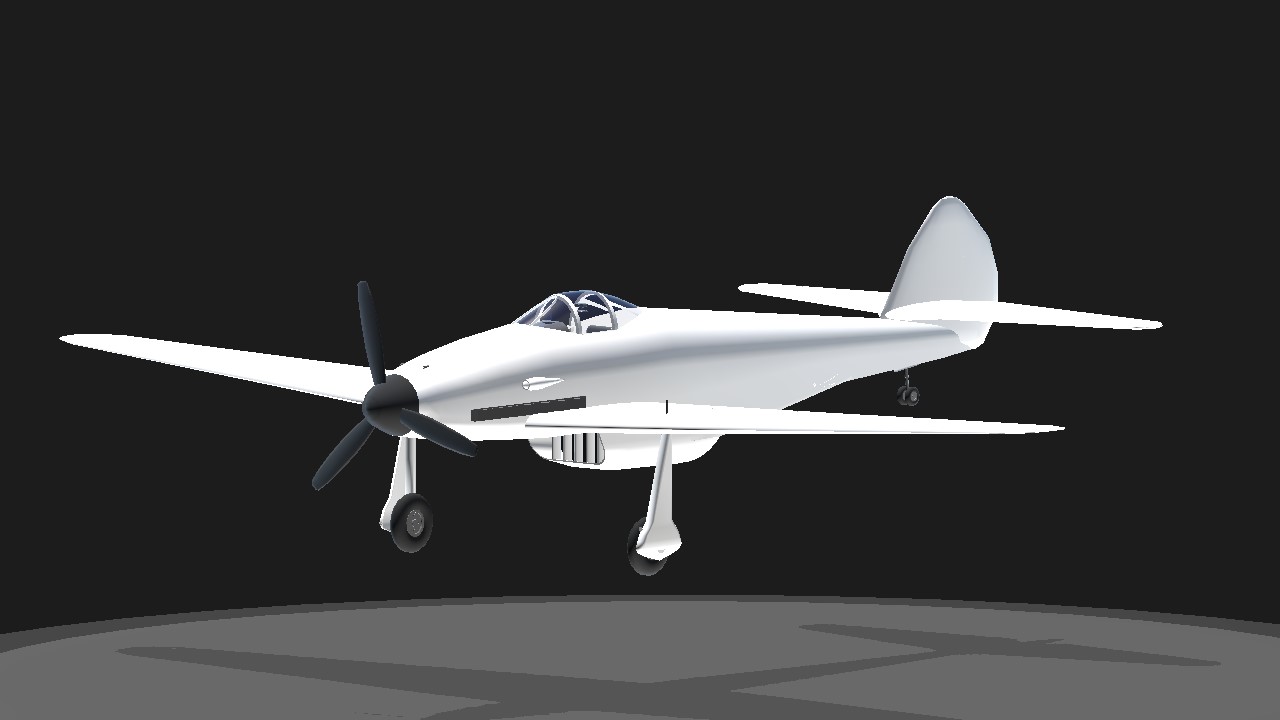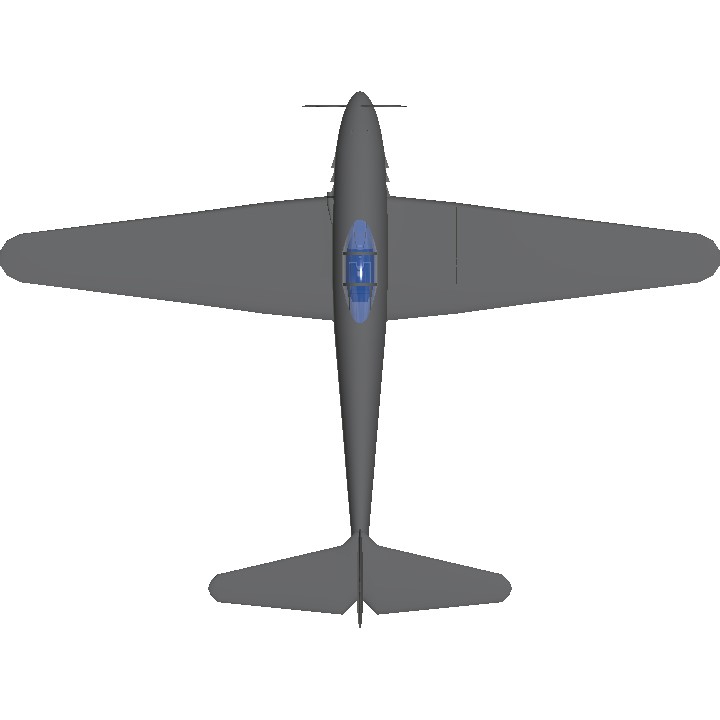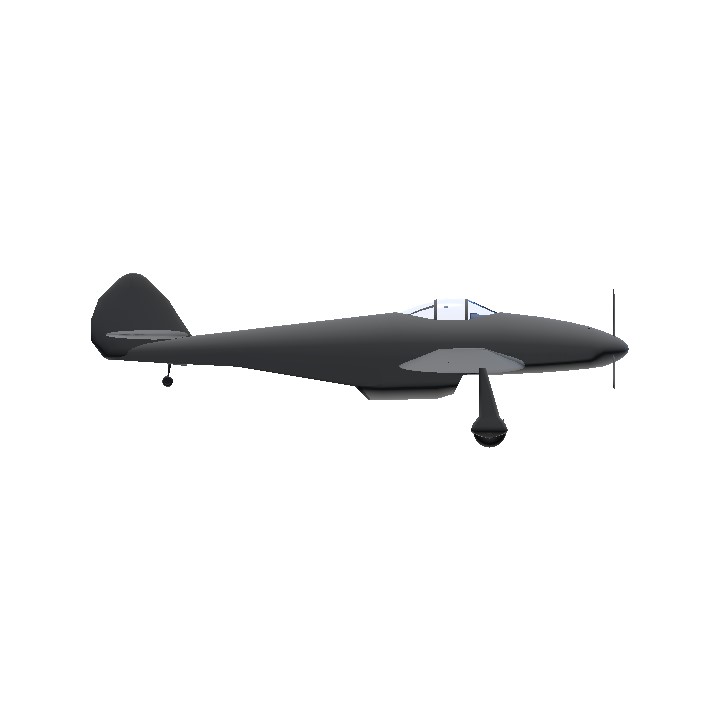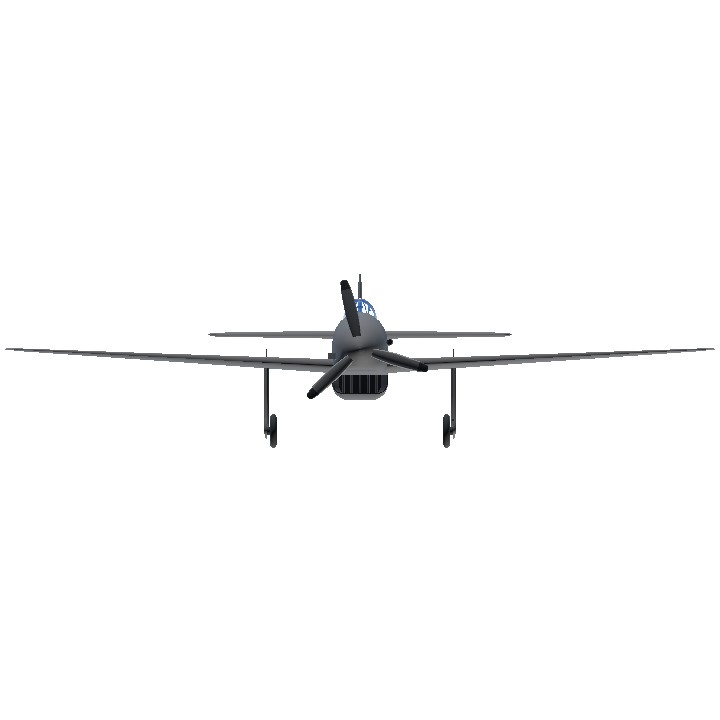Sarkuva-Furkust Type.109 — Lore
Entry into Service: 1 October 1943
Role: High-Altitude Interceptor / Air Superiority Fighter
Manufacturer: Sarkuva-Furkust Aviation Works (SFAW)
Engine: ANB-1572 — 1,572 hp inverted V12 (naturally aspirated, no supercharger), driving a 3-blade variable-pitch propeller
Armament:
2× 13.7mm KtB-13 machine cannons (nose-mounted, 900 rds each)
Performance: 650 km/h max speed | 9,500 m service ceiling
Handling Feature: High-lift rounded wings improving low-speed stability and high-altitude control without slats.
Design Philosophy
The Type.109 was not an evolution of the Type.106 — it was a completely new airframe born from SFAW’s effort to simplify and modernize production as the Republic’s industry fractured under war pressure in 1943.
Where the 106 was sleek, high-tech, and reliant on leading-edge aerodynamics, the 109 was raw muscle — a “bare-metal power fighter.”
Its ANB-1572 engine, a naturally aspirated inverted V12, delivered tremendous low- to mid-altitude power, but struggled to maintain thrust at extreme altitudes. Engineers chose mechanical simplicity over complexity, avoiding superchargers to ensure reliability and easy maintenance in front-line conditions.
The 109’s rounded, untapered wings were unconventional for SFAW designs — they offered remarkable lift, predictable stall behavior, and forgiving control even at high altitudes where airflow was thin.
This came at the cost of some top-end efficiency — but pilots praised the aircraft’s stability and smooth roll characteristics.
In Combat
The Type.109 entered service in late 1943, initially alongside the Type.106 rather than replacing it.
It quickly found its niche as a high-altitude hunter, intercepting bombers and recon aircraft operating above 8,000 meters — a job few other Republic fighters could handle without superchargers.
While the lack of forced induction limited sustained performance at peak ceiling, the aircraft’s sheer power and aerodynamic simplicity made it reliable and easy to maintain.
Pilots learned to exploit its excellent climb-to-combat capability: “climb first, dive to kill, and keep momentum.”
Its twin 13.7mm cannons were precise and effective — though insufficient for armored bombers, they made the 109 deadly in energy fights against enemy interceptors.
Strengths
✔ Excellent power-to-weight ratio despite lack of supercharger
✔ Smooth, stable handling thanks to rounded high-lift wings
✔ Reliable engine, easy maintenance under field conditions
✔ Fast climb rate and exceptional acceleration below 8,000m
Weaknesses
✖ Loses power significantly above 9,000m due to no supercharger
✖ Armament limited for heavy targets
✖ High drag from rounded wings reduces dive efficiency
✖ Sensitive to over-revving; engine management required skill
Pilot Reputation
Among pilots, the Type.109 was known as:
“The Silent Climber” — because it rose quickly, struck decisively, and vanished before enemies could respond.
It rewarded pilots who mastered momentum fighting and altitude control. Veterans described it as “brutally honest” — it gave exactly what you asked of it, but nothing more.
The Type.109’s introduction marked the Republic’s return to straightforward, practical air combat engineering — power, balance, and reliability over technological showmanship.
Specifications
Spotlights
- Xamesria27 13 hours ago
- TheAvgeekNextDoor 1 hours ago
General Characteristics
- Created On Android
- Wingspan 42.6ft (13.0m)
- Length 31.8ft (9.7m)
- Height 10.3ft (3.1m)
- Empty Weight 5,638lbs (2,557kg)
- Loaded Weight 6,824lbs (3,095kg)
Performance
- Horse Power/Weight Ratio 0.23
- Wing Loading 27.4lbs/ft2 (133.9kg/m2)
- Wing Area 248.9ft2 (23.1m2)
- Drag Points 967
Parts
- Number of Parts 210
- Control Surfaces 7
- Performance Cost 971





